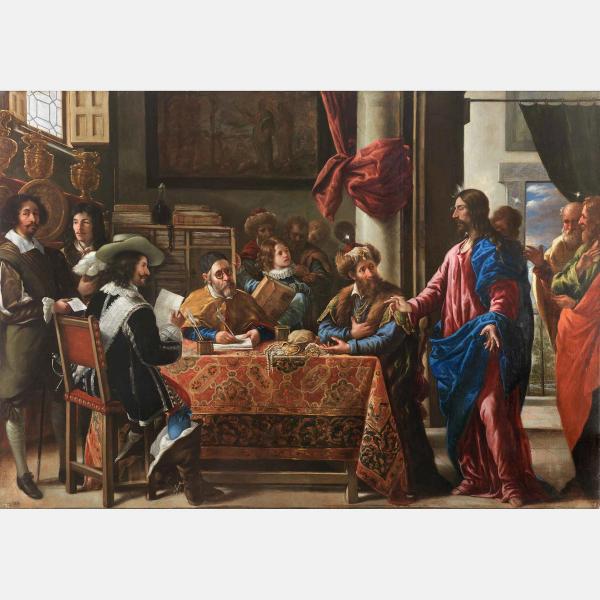The Flight into Egypt
Artwork Details
- Title: The Flight into Egypt
- Artist: Juan de Pareja (Spanish, Antequera 1606–1670 Madrid)
- Date: 1658
- Medium: Oil on canvas
- Dimensions: 66 1/2 × 49 3/8 in. (168.9 × 125.4 cm)
- Classification: Paintings
- Credit Line: The John and Mable Ringling Museum of Art, Sarasota, Florida
- Curatorial Department: European Paintings
Audio

639. The Flight into Egypt, Juan de Pareja, 1658
NARRATOR: This painting holds fascinating clues — some not visible to the naked eye — about how Pareja worked, and how to identify his “hand” as an artist. It’s his earliest known signed and dated work: The Flight into Egypt. We see Joseph, Mary, and the Christ child fleeing from King Herod to safety in Egypt.
Barbara Ramsay, Chief Conservator at the John and Mable Ringling Museum of Art, has worked extensively with this painting, and made substantial findings.
BARBARA RAMSAY: Examining the painting just with the naked eye we could see that there were some obvious changes that the artist had made during execution of this painting. The donkey that you see in the foreground carrying Mary has various brushstrokes that do not relate to the legs of the donkey so, that tells you that the artist painted the legs in a certain position and then later painted over the earlier rendition but with time, with the aging of the oil paint, what happens is that it becomes more translucent and some of these earlier brushstrokes become more evident.
NARRATOR: Ramsay and her team were also able to explore the painting’s deeper story, below the surface, using advanced imaging techniques that reveal the artist’s working process.
BARBARA RAMSAY: We have used scanning X-ray fluorescence techniques which allows you to identify the pigments that have been used in a painting and also to see underlying compositions. We’ve used infrared reflectance imagery so that we can see through the paint layers to see changes that the artist has made.
The significance in itself for this painting is substantial but it becomes really important when we start to compare these images to those of other paintings by Pareja, and see if there’s a pattern or a trend and that can be used in attribution and authentication studies in the future.
NARRATOR: Ramsay is part of a larger world of scholars who continue to explore the context and significance of Pareja’s life and work — nearly a century after Arturo
Schomburg’s journey to Spain. That trip was testament to a passion and appreciation that continues to grow, reflected in the array of scholarship you’ve heard about today. Almost 400 years later, Juan de Pareja’s story and the Afro-Hispanic experience is increasingly illuminated, including how much there still is left to learn.